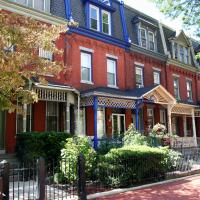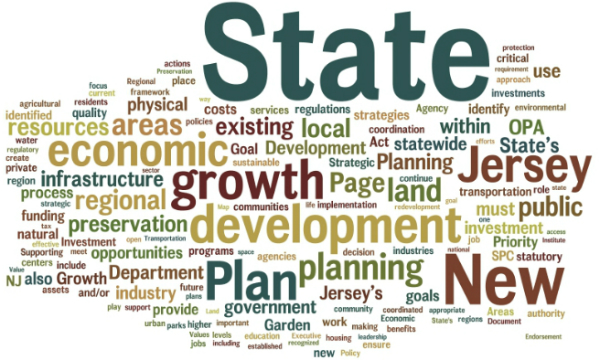New Jersey Future Blog
Post-Recession, Housing Growth and Value in Distressed Municipalities Keep Pace With Non-Distressed
October 5th, 2015 by New Jersey Future staff
This article was written by New Jersey Future intern Harrison Blackman, who did the underlying data analysis.
In 2006, the Housing and Community Development Network of New Jersey released a report titled Cities in Transition: New Jersey’s Urban Paradox, in which it examined 30 urban communities in New Jersey that it characterized as “distressed,” based on a number of socioeconomic indicators. The economic landscape has changed a great deal since 2006, especially in the wake of 2008’s Great Recession and the resurgence of growth in many urban areas. So how have these distressed communities fared since the start of the 21st century?
Analysis using data on residential values from the New Jersey Legislative Data Book and data on residential certificates of occupancy (COs) from the New Jersey Department of Community Affairs for the years 2000 through 2013 found that distressed, highly built-out communities have kept pace with the CO growth of all highly built-out communities in the state. This research suggests that residential growth in New Jersey in the wake of the recession has been shared more evenly by all municipalities, even if they are considered distressed. Moreover, among only the predominantly built-out municipalities (those that had developed at least 90 percent of their developable land as of 2002), the analysis shows the distressed places grew in value at a slightly higher rate than the non-distressed places. This suggests that, rather than being left behind by the post-recession renewed interest in urban living, distressed municipalities are in fact bouncing back at a greater rate than their non-distressed built-out neighbors.
Methods
Municipal built-out percentages for the year 2002, which was used as the baseline, were calculated using data developed by researchers at Rutgers and Rowan universities. The total amount of land developed was divided by the total amount of “developable” land, which includes already-developed land and land that may still be developed in the future, while excluding lands that are undevelopable, either because they are environmentally constrained or because they have been permanently preserved.
Next, the analysis compared percent growth in COs and percent growth in average residential value in New Jersey municipalities for the years 2000-2013 using the following categories: “distressed” as defined by the Housing and Community Development Network of New Jersey report and 90 percent or more built-out; 90 percent built-out and not distressed; all municipalities 90 percent or more built-out; and all New Jersey municipalities. Comparing the distressed built-out municipalities with the non-distressed ones allows us to consider whether growth among highly built-out places was universal, regardless of “distressed” categorization.
Rather than being left behind by the post-recession renewed interest in urban living, distressed municipalities are in fact bouncing back at a greater rate than their non-distressed built-out neighbors.
To estimate the trend in housing over the years 2000-2013, COs as a percentage of existing housing stock in the year 2000 were used to track additions to the housing stock. This model gives us a rough outline of housing stock growth, even if it cannot account for buildings that have been demolished.
Average residential value was used to track changes in municipalities’ property values. Percent change in average residential value was calculated to measure growth in value for 2000-2006 and 2010-2013 after adjusting average residential value to 2013 dollars using the Consumer Price Index (CPI). (We did not have data available for the years between 2007 and 2009.)
Findings
A total of 204 New Jersey municipalities were 90 percent or more built out in 2002 (36.0 percent of municipalities). Twenty-one of these were categorized distressed.” Growth in COs in distressed and 90 percent or more built-out, not distressed and 90 percent or more built-out and 90 percent or more built out overall are more or less equal, centering around medians of 3.70 percent, 3.52 percent, and 3.53 percent, respectively.
While growth in these areas lags behind growth in COs for the state overall, where median CO growth rate was 6.36 percent, the fact that distressed, highly built-out municipalities kept pace with non-distressed, highly built-out municipalities suggests that high CO growth rates are not unique to non-distressed places.
Among highly built-out places, distressed municipalities have seen their home values grow, on balance, slightly more than their non-distressed peers. The median percent change since 2000 in average residential value for distressed, highly built-out municipalities is 35.3 percent, which exceeds the median percent change in average residential value for non-distressed, highly built-out communities (28.1 percent), the median percent change for all highly built-out communities (29.6 percent), and the median percent change for all New Jersey municipalities (27.68 percent). New Jersey property values overall have grown significantly over the course of the past 14 years. Distressed communities are firmly part of the trend and no longer missing out on New Jersey’s growing values.
New Jersey has seen growth in housing stock and average residential value, and distressed communities have been able to participate in this trend from 2000-2014, in contrast to past patterns. The fact that distressed municipalities are keeping pace with other built-out municipalities in terms of issuing COs, and that they are actually seeing their property values increase faster than in their built-out neighbors, indicates that they have not only not been left behind by the continued growth of the United States’ most built-out state but have been able to capitalize on the renewed interest in urban living every bit as well as their non-distressed counterparts.

















